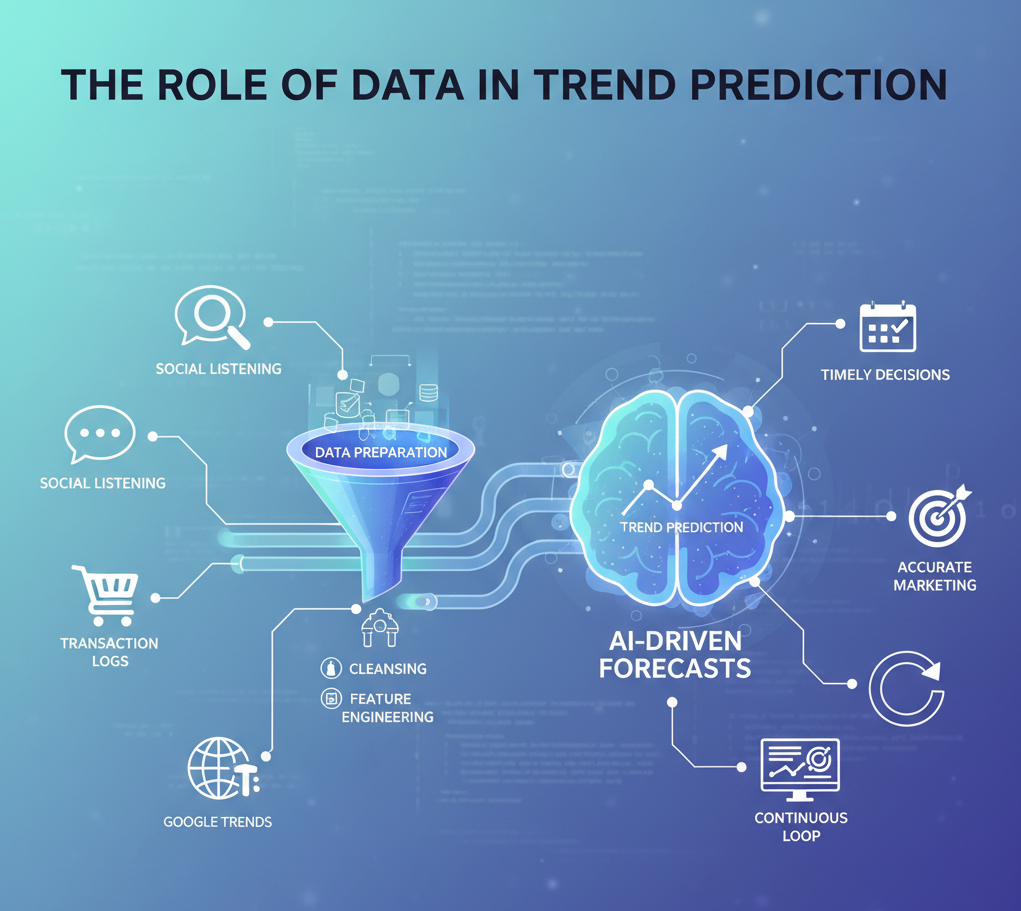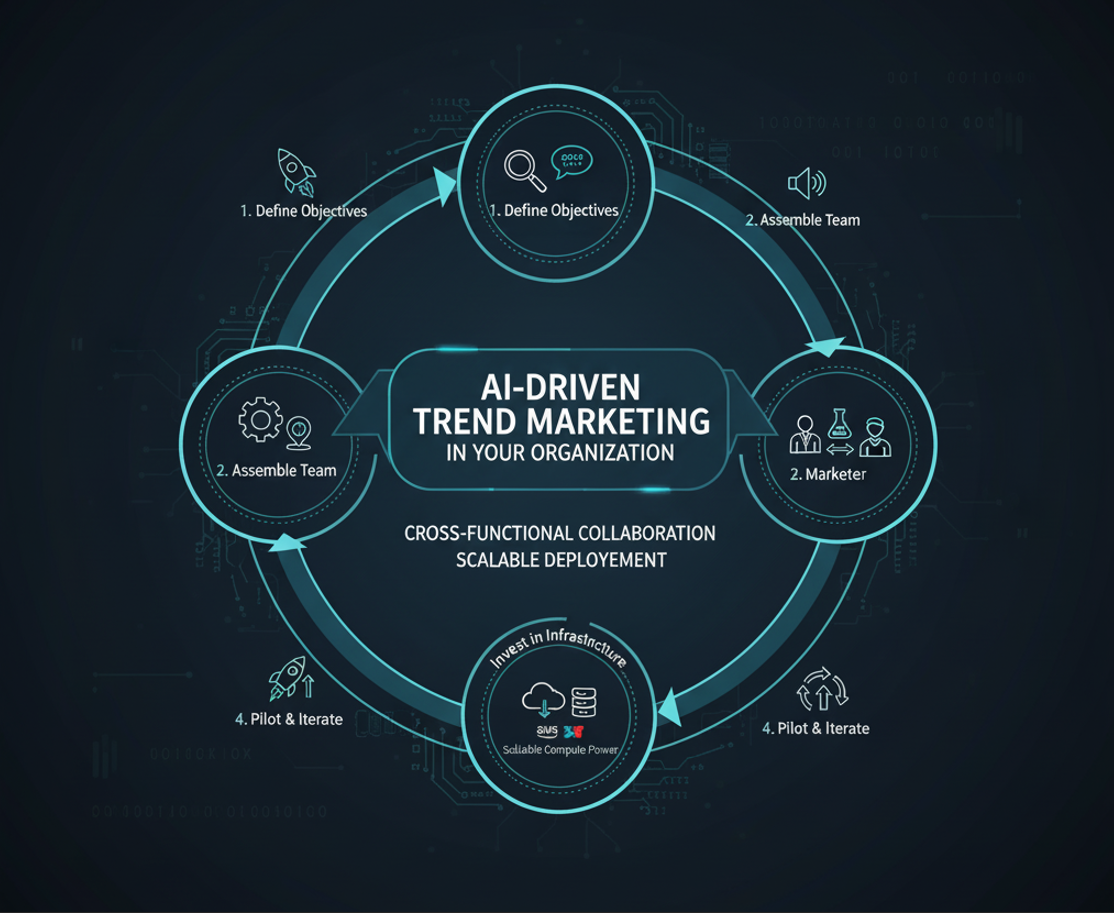
In today’s fast-paced digital landscape, consumer preferences shift with lightning speed. Traditional methods of identifying and capitalizing on trends no longer suffice. As brands scramble to stay relevant, artificial intelligence & machine learning have emerged as powerful allies. By processing vast data sets in real-time, AI-powered trend forecasting provides marketers with actionable insights to anticipate shifts, tailor campaigns, and maintain a competitive edge.
This comprehensive guide explores the fundamentals of AI-driven trend marketing, the technologies behind it, practical implementation steps, and the challenges marketers must overcome. Whether you’re a seasoned marketing executive or an emerging startup founder, you’ll discover how to leverage predictive analytics to craft strategies that resonate with tomorrow’s consumers today.
What Is AI-Powered Trend Forecasting?
AI-powered trend forecasting uses advanced algorithms to analyze massive volumes of structured and unstructured data. Sources range from social media chatter, search engine queries, and e-commerce transactions to influencer content and news feeds. Machine learning models detect patterns, anomalies, and emerging keywords that signal the birth of new consumer behaviors or preferences.
Unlike conventional market research techniques—surveys, focus groups, or manual monitoring—AI can process data 24/7, adapt to evolving patterns, and generate predictions with increasing accuracy over time. This dynamic capability allows brands to act on insights rather than react to lagging indicators.
In essence, AI trend forecasting shifts marketing from a retrospective practice to a forward-looking discipline. Teams gain early warnings about potential viral moments, seasonal demand spikes, or shifting tastes in product categories, enabling proactive campaign planning.
The Role of Data in Trend Prediction

Data is the fuel that powers AI-driven forecasts. High-quality, diverse data sources enrich the training sets for machine learning models. Social listening platforms capture keywords and sentiment, while transaction logs reveal purchase intent. Publicly available datasets, like Google Trends or industry reports, supplement proprietary information to broaden context.
Preparing data for analysis involves cleansing, normalization, and feature engineering. Cleansing removes duplicates, spam, and irrelevant posts. Normalization aligns data formats across platforms. Feature engineering transforms raw variables into predictive inputs, such as trend velocity (rate of mentions over time), geo-location weightings, and influencer amplification scores.
Once data pipelines are established, automated workflows feed fresh information into models, ensuring forecasts reflect the latest developments. This continuous loop between data ingestion and model refinement drives more accurate and timely marketing decisions.
Machine Learning Models for Forecasting Trends
Various machine learning techniques power trend forecasting. Time-series models, like ARIMA or Prophet, specialize in detecting seasonality and recurring patterns. Classification algorithms, such as random forests or support vector machines, categorize content by topic, sentiment, or engagement potential. Deep learning networks, including recurrent neural networks (RNNs) and transformers, excel at processing unstructured text data to uncover semantic relationships.
Ensemble methods combine multiple algorithms to improve predictive performance. For instance, a hybrid model might use an RNN to extract thematic insights from tweets, then apply a gradient boosting machine to predict whether a trend will reach critical mass within seven days. By blending strengths, ensemble approaches mitigate single-model weaknesses and reduce overfitting.
Model evaluation is critical. Metrics like precision, recall, F1 score, and mean absolute error (MAE) gauge forecasting accuracy. Backtesting—running models on historical data—validates that predictions align with known outcomes before deploying them in live campaigns.
Implementing AI-Driven Trend Marketing in Your Organization

Adopting AI for trend marketing requires careful planning. Start with a clear problem statement: Are you aiming to launch new products in sync with emerging tastes? Or optimize content calendars to ride forthcoming social media waves? Defining objectives helps select the right data sources and modeling techniques.
Next, assemble a cross-functional team. Data engineers build and maintain pipelines. Data scientists develop and validate models. Marketing strategists interpret forecasts and translate them into creative briefs. Collaboration ensures that technical outputs align with business goals and branding guidelines.
Invest in scalable infrastructure. Cloud platforms like AWS, Google Cloud, or Azure offer managed AI services—AutoML, real-time analytics, and serverless compute—that accelerate deployments without large upfront hardware costs. Begin with a pilot project, monitor performance, gather stakeholder feedback, then iterate toward a full-scale rollout.
Case Studies: Success Stories
Beauty brand GlowTrend implemented an AI forecasting platform to detect surging consumer interest in clean skincare ingredients. By identifying plant-based actives six months before competitors, GlowTrend launched targeted educational campaigns and secured sponsorships with eco-conscious influencers. Sales of their new product line soared by 45 percent in the first quarter.
Sporting goods retailer ActiveWave used machine learning to analyze social feeds and search queries around outdoor activities. The platform forecast a spike in urban cycling enthusiasm. ActiveWave responded by custom-designing commuter-friendly bikes and collaborating with cycling advocates. Traffic to their e-commerce site increased by 60 percent, and conversion rates improved by 22 percent.
These examples underscore how AI forecasts empower brands to make timely, data-driven decisions. Early movers capture market share while competitors scramble to catch up.
Challenges and How to Overcome Them
Despite its promise, AI-powered trend marketing faces obstacles. Data privacy regulations—GDPR, CCPA—restrict access to certain user data. Brands must implement robust anonymization and compliance protocols. Partnering with reputable data vendors ensures legal clarity and ethical practices.
Bias in training data can skew forecasts. For instance, over-reliance on English-language sources may underrepresent trends in non-English markets. To combat this, diversify data corpora by including multilingual feeds, regional platforms, and demographic segments. Regular bias audits help maintain model integrity.
Integration with legacy systems presents technical hurdles. Siloed databases, outdated content management systems, and rigid approval workflows slow down execution. Mitigate friction through API-based architectures, modular software stacks, and agile project management methodologies that prioritize incremental integration and rapid feedback loops.
Future Outlook for AI Trend Marketing
As AI capabilities evolve, trend forecasting will become even more sophisticated. Advances in natural language understanding will allow models to parse nuanced cultural contexts and regional slang. Real-time computer vision analysis of live video streams may detect emerging fashion or lifestyle trends before they hit mainstream awareness.
Predictive analytics will merge with augmented reality (AR) and virtual reality (VR) experiences. Imagine a virtual storefront that dynamically updates product displays based on forecasted consumer preferences, creating hyper-personalized shopping journeys. The boundary between prediction and activation will blur, enabling seamless, automated campaign rollouts.
Ultimately, AI-powered trend marketing will shift from a competitive advantage to an operational necessity. Brands that invest early in predictive infrastructures and cultivate AI fluency across teams will lead their industries into the next era of customer-centric growth.
Conclusion
Trend marketing is no longer about chasing yesterday’s insights. It requires a forward-looking approach powered by AI and machine learning. By harnessing predictive analytics, brands can identify emerging consumer behaviors, adapt messaging in real time, and launch campaigns that resonate on day one rather than week ten.
Whether you’re just beginning your AI journey or looking to scale existing initiatives, the path forward involves data-driven experimentation, cross-functional collaboration, and a commitment to ethical practices. Embrace AI-powered trend forecasting today, and empower your brand to anticipate tomorrow’s opportunities before they become mainstream realities.
Learn more about: The Secret Sauce of Viral Food Marketing Campaigns










Leave a Reply